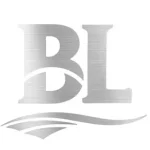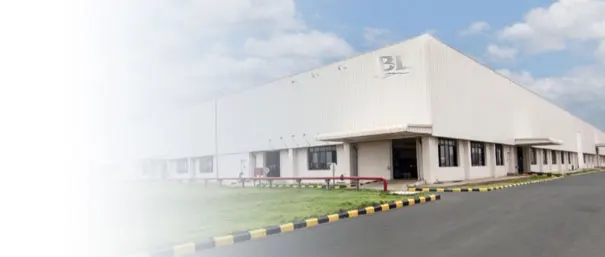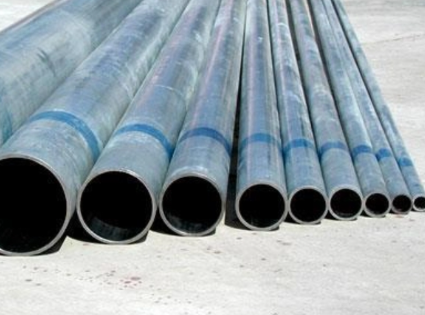ASTM A53 Galvanized Steel Pipes: Compliance, Pressure Ratings, and Applications in Water/Gas Distribution Systems


This in-depth guide explains how ASTM A53 galvanized steel pipes are engineered, tested, and specified for safe, long-life service in municipal and industrial water and gas distribution systems. It covers compliance with ASTM and ASME standards, pressure classes, coating performance, joining methods, and best practices for installation and inspection.
1. Standard Overview and Scope
ASTM A53 is a widely adopted specification covering seamless and welded black and hot-dipped galvanized steel pipe in nominal pipe size (NPS) 1/8 to 26 for mechanical and pressure applications, as well as for ordinary uses in steam, water, gas, and air lines. The standard defines three major types and grades: Type F (furnace-butt welded), Type E (electric-resistance welded), and Type S (seamless), each available in Grade A and Grade B. For pressure-bearing distribution lines, Grade B is typically preferred due to higher tensile and yield strengths. When corrosion protection is needed, hot-dip galvanizing per ASTM A123/A153 or the galvanizing provisions in ASTM A53 is specified to enhance service life in moist, mildly acidic/alkaline, or coastal environments.
In water and gas distribution, compliance often requires more than ASTM A53 itself. Projects may reference ASME B31.3 or B31.8 for process and gas pipeline design, AWWA standards for potable water systems, API 5L where line pipe criteria apply, and ISO/EN equivalents for international supply chains. Understanding this multi-standard landscape is key to ensuring the pipe not only meets base mechanical requirements but also satisfies system-level performance, safety, and regulatory expectations.
2. Material and Mechanical Properties
ASTM A53 Grade B galvanized pipe provides a balance of strength, ductility, and weldability for buried and above-ground distribution networks. Typical mechanical benchmarks include minimum yield strength around 35 ksi (240 MPa) and minimum tensile strength around 60 ksi (415 MPa), with actual values varying by mill practice and size. Ductility and impact toughness are crucial for installation handling, cold bending, and resistance to localized strain at supports or due to soil movement. Galvanizing does not materially increase base strength; however, it adds a sacrificial zinc layer to protect the steel from uniform corrosion and pitting, particularly in oxygenated, moisture-rich environments.
For potable water systems, internal linings or supplementary coatings are sometimes specified to mitigate scaling and biofilm formation. For gas service, cleanliness and internal surface condition reduce pressure drop and minimize the risk of particulate-related valve or regulator issues. Mill hydrostatic testing and nondestructive examination help assure seam integrity in welded products, while seamless variants are preferred in some high-integrity contexts.
3. Pressure Ratings and Thickness Selection
Pipe pressure capability depends on the nominal size, wall thickness schedule, material grade, temperature, and jointing method. System designers often select schedule 40 or schedule 80 for common distribution mains, referencing operating pressure (OP), maximum allowable working pressure (MAWP), surge allowances, and applicable code safety factors. Where transient pressures (water hammer, compressor trips, valve slams) are expected, thicker walls or surge suppression devices are recommended to maintain sufficient hoop stress margin.
| NPS | Common Schedule | Wall (mm) | Typical MAWP (Grade B, 38°C, clean joints) [bar] | Notes |
|---|---|---|---|---|
| 1″ | Sch 40 | 3.38 | ~195–215 | Threaded or welded; verify code derating and corrosion allowance. |
| 2″ | Sch 40 | 3.91 | ~140–160 | Common for water loops; surge checks recommended. |
| 4″ | Sch 40 | 6.02 | ~85–100 | Municipal mains; consider cathodic protection if buried. |
| 6″ | Sch 40 | 7.11 | ~70–80 | Gas distribution trunk; weld integrity is critical. |
| 6″ | Sch 80 | 10.97 | ~110–125 | Higher MAWP and corrosion allowance; increased weight. |
Values are indicative; always calculate per code with actual dimensions, temperature, joint efficiency, and corrosion allowance. For gas systems, consult B31.8 or local regulations.
4. Galvanizing Performance and Corrosion Control
The life of a hot-dip galvanized layer is a function of zinc thickness, environment, and mechanical damage during handling. In neutral or mildly alkaline soils, galvanized coatings offer robust sacrificial protection; in highly acidic soils or waters, and in dissimilar-metal couplings, targeted mitigation is advisable. For buried pipelines, a combination of coating integrity, proper backfill, wrapping, and cathodic protection (CP) commonly yields decades of service. Above ground, drainage design minimizes standing water and accelerates dry-out, reducing white rust formation.
Where potable water standards apply, ensure the galvanizing process and any sealers comply with local drinking water approvals. In gas lines, zinc spalling should be avoided via proper cleaning and commissioning, maintaining dry gas where feasible, and preventing galvanic couples with copper alloys without insulators.
Corrosion control checklist:
- Specify minimum zinc coating mass per applicable standard and verify test certificates.
- Use dielectric unions/isolation joints when transitioning to dissimilar metals.
- Design for drainage and provide protective sleeves at supports.
- Apply CP for critical buried segments and monitor potentials.
- Implement holiday testing on wrapped sections before backfill.
5. Jointing Methods and Installation Practices
Galvanized ASTM A53 pipes can be threaded, grooved, or welded. Threaded joints are common for small diameters in low-to-moderate pressure water and gas circuits. Use compatible thread sealants rated for the media and temperature; avoid over-torquing, which can induce stress risers at the thread root. Grooved couplings enable rapid installation and flexibility for thermal movement. Welding is permissible; however, remove zinc in the weld area, use adequate fume extraction, and restore protection after welding via zinc-rich coatings or metallizing. For buried services, comply with trenching, bedding, and backfill specifications to prevent point loads and coating damage.
Pressure testing should follow code: hydrostatic for water lines and pneumatic or gas service test for pipelines under proper safety controls. Gradual pressurization with real-time monitoring of joints helps identify weaknesses without causing shock loads. Document all test results and maintain traceability to heat numbers and MTRs.
6. Applications in Water and Gas Distribution
ASTM A53 galvanized pipes are chosen for municipal branch mains, building risers, fire service feeds (where permitted by local codes), industrial utility loops, and low-to-medium pressure natural gas distribution. The decision often balances corrosion resistance, mechanical robustness, availability, and ease of joining. In retrofit projects, galvanized A53 provides a familiar platform compatible with legacy threaded infrastructure. In new installations, combining galvanized pipe with isolation components and smart monitoring yields low leakage rates and extended asset life.
In coastal or industrial atmospheres, designers may prefer higher zinc thickness or duplex systems (galvanizing plus paint) for UV and chemical resilience. For cold climates, consider brittle fracture prevention via proper steel grade selection, insulation, heat tracing, and drainage to prevent freeze-thaw damage at dead legs.
7. Quality Assurance, Traceability, and Compliance
Compliance begins with mill certification. Verify heat numbers, chemical composition, mechanical test results, hydrostatic/NDE outcomes, galvanizing inspection data (coating mass/thickness), and dimensional tolerances. For regulated gas systems, welding procedure qualifications (WPS/PQR), welder certifications, and radiographic/ultrasonic examination records may be required. Site acceptance includes visual inspection for dents, ovality, thread quality, bevel geometry, and coating holidays. A robust inspection test plan (ITP) aligned with project milestones reduces rework and life-cycle risk.
Long-term compliance depends on maintenance documentation: corrosion monitoring logs, CP surveys, valve exercise records, leak detection audits, and periodic pressure integrity assessments. Digital twins and GIS-linked asset registers increasingly support predictive maintenance strategies, reducing unplanned downtime and non-revenue water or fugitive gas losses.
Engineering Support and Sourcing
BaoLi Iron & Steel Co., Ltd is a China-based manufacturer supplying galvanized steel pipes with rigorous quality control, flexible sizing, and global logistics. Our engineering team assists with specification, code alignment, and corrosion strategy tailored to your water and gas projects.
Explore products:
galvanized steel pipes
and
galvanized steel pipe
selections suitable for ASTM A53-compliant applications.
8. Practical Specification Tips
- Define A53 type/grade and wall schedule per pressure and surge analysis; include corrosion allowance where applicable.
- Specify galvanizing thickness, post-fabrication repair of cut ends and welds, and acceptance criteria (e.g., ASTM A123/A153 references).
- Call out end preparation (threaded, beveled, grooved) and compatible fittings and sealants approved for the service medium.
- Include inspection, test, and documentation requirements: MTRs, coating thickness reports, hydrostatic tests, NDE where required.
- For buried lines, require coating holiday testing, CP design, and installation records before backfilling.
Typical KPI outcomes when specifying correctly:
- Service life extension of 1.5–3x over non-galvanized equivalents in comparable environments.
- Leak rate reduction via high-quality joints and documented pressure testing.
- Lower total ownership cost from reduced maintenance and fewer unplanned outages.
9. Why BaoLi Iron & Steel
As a leading steel manufacturer, BaoLi Iron & Steel delivers galvanized A53-compliant pipe with tight dimensional control, consistent zinc coating, and reliable weld seam integrity. We support custom diameters, wall thicknesses, and cut-to-length services, and we provide technical guidance from material selection to installation best practice. Our global service model covers production, export packaging, shipping, and contract management, with the goal of achieving 100% customer satisfaction throughout the project lifecycle.
Whether you are upgrading municipal water mains, expanding an industrial utility network, or building new gas distribution infrastructure, our team can help optimize specifications for durability, regulatory compliance, and cost efficiency.
Key Takeaways
- ASTM A53 galvanized steel pipes offer a standardized, robust solution for water and gas distribution when paired with proper codes and QA.
- Correct wall selection and surge analysis are essential for safe MAWP and lifecycle reliability.
- Galvanizing performance depends on coating thickness, environment, and post-fabrication protection.
- Professional installation, testing, and documentation ensure compliance and minimize long-term risk.
- BaoLi’s technical support and global logistics simplify procurement and implementation.



